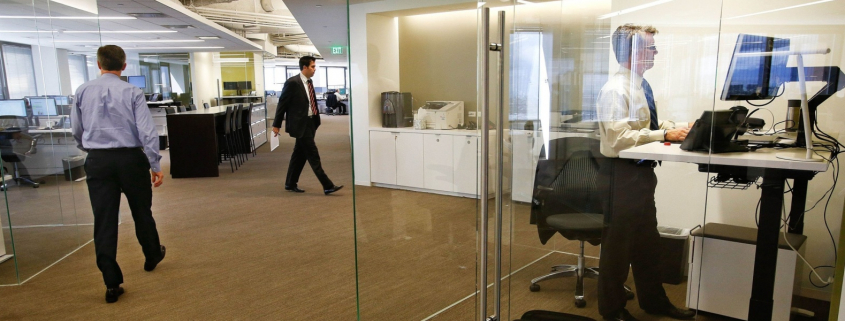Primary commercial property insurance is a buyers’ market with rate decreases of up to 20% for many U.S. accounts that renewed at midyear, with the exception being those with high catastrophe exposures.
Limited catastrophe losses and an influx of insurance capacity exerted considerable pressure on prices, brokers and market experts say. “The market is very insurance buyer-friendly right now,” said Duncan Ellis, U.S property practice leader at Marsh USA Inc. “Purchasers of property insurance are finding a very favorable environment toward pricing, toward capacity and toward interest in their risks.”
Premium decreases should be “on an average basis, probably high single digits to low double-digit percentage decreases,” Mr. Ellis said. Some accounts could see rates fall up to 20% “based upon good solid competition in the marketplace.”
“For 2014, we are definitely in a rate decrease environment,” said David Finnis, Atlanta-based national property practice leader at Willis North America Inc. Willis clients saw property rates fall 7.5% to 12% through June 30, he said.
However, catastrophe-exposed accounts will find a somewhat “less friendly” market than those without catastrophe exposure, Mr. Finnis said. “As one would expect, premiums are still higher in high-catastrophe areas like Florida and California vs. noncatastrophe areas like the Midwest,” he said.
Stewart Ellenberg, risk manager for the city of Boulder, Colorado said the city was fortunate to renew with a “slight” rate increase despite a large property insurance claim related to the September 2013 flood in the region. Likewise, Union County, North Carolina renewed its commercial property coverage for a 2% price increase, but deductibles for flooding and earthquake each doubled to $50,000, said Tiffany Allen, the county’s risk manager.
Looking ahead, about the only thing that could turn the market would be a major hurricane or other disaster. “If there are no catastrophe events, we predict that you’re going to be looking at double-digit decreases for the remainder of the year,” said Al Tobin, New York-based managing principal of Aon Risk Solutions’ property practice. “Double-digit decreases will continue,” approaching 20% for some accounts, he said.
“There’s just so much capacity in the property market right now, between incumbent insurers wanting to increase their lines or new underwriters trying to get on to the accounts,” Mr. Finnis said.
Mr. Tobin said, “What’s driving the market as much as anything is increased appetite among the top 10 catastrophe property carriers.”
“The absence of major losses … would be the No. 1 market driver, because that’s starting to attract capital,” Mr. Ellis said. “When looking at the results for 2013 combined with what we have seen in 2014 thus far, property is looking like a solid bet right now and is thus why we are seeing a lot of money or capital flowing into the property space.”
Analysts Agreed
“If you take a step back, it’s how financial markets work,” said Cliff Gallant, an analyst at Nomura Securities International Inc. in San Francisco. “There’s been an area where profits have been pretty good in recent years relatively speaking and so capital is flowing there in different forms.”
“I think where there’s underwriting success, that attracts capital to those lines,” said James Auden, managing director at Fitch Ratings Inc. in Chicago. “So if you have large underwriting gains in a segment, existing players put more capital into those lines.”
Alternative capital flowing into the reinsurance space may reduce reinsurance pricing for primary insurers, but it has not significantly affected primary insurance prices. “Reinsurance is just one ingredient in the makeup of (primary insurance) costs,” Mr. Tobin said.
Also, there is no broad lingering effect from Superstorm Sandy on property pricing this year, Mr. Tobin said. “Insurance companies are more acutely aware of deductibles and limits, but price has not been affected,” he said.
“There is no Sandy hangover on pricing,” Mr. Finnis said. “The only lingering result is that individual insurers are no longer providing $100 million in limits in the areas that were affected.” Those policy limits now vary by account but usually range from $25 million to $50 million.
What’s more, the uncertainty of congressional renewal of the federal terrorism insurance backstop thus far has not caused property pricing movement. The backstop will expire at the end of the year unless Congress renews it. Renewal legislation has been introduced in the House and Senate.
“There has not been any effect on (property) pricing and there is not likely to be because there is more supply,” Mr. Tobin said of the federal terrorism program.
Souce: Business Insurance










